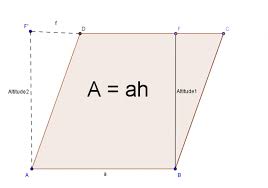Question #8453f
2 Answers
The height would be 5 (units).
Explanation:
Since the area of a parallelogram is found by calculating base times height, we can do
If this were a longer, more complicated problem with a possible remainder I would have done polynomial long division or synthetic division, but since the division isn't long or complex, we can simply divide it by putting the area over the base.
Now we can simplify the fraction by seeing if there are common factors that can be divided out.
A GCF (5) can be factored out of
We are left with 5 as the height.
Explanation:

Let Area = A, base = a, h = height
Given :

